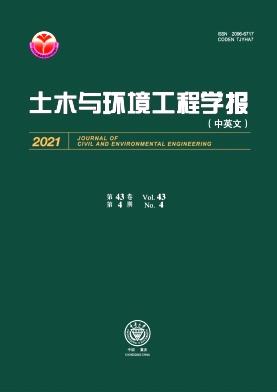以工业废料为基础的水泥熟料
Q2 Engineering
Tumu yu Huanjing Gongcheng Xuebao/Journal of Civil and Environmental Engineering
Pub Date : 2020-01-01
DOI:10.37421/jcde.2020.10.343
引用次数: 0
摘要
水泥的生产消耗能源并产生二氧化碳排放。研究了利用粉煤灰(CFA)、污水污泥灰(SSA)和高硅酸钙(CS)含量的工业废渣生产水泥熟料的方法。进行了实验,以假设使用一种可能消耗较少的能源和原材料的过程,用于水泥熟料制造。原料混合物的粘土和石灰石含量低于波特兰熟料制造中使用的含量,然后在较低的温度下燃烧,范围从1000到1200°C。由于原料混合物中含有助熔剂和矿化剂,该方法可将煅烧产生的二氧化碳排放量减少高达60%,每公斤熟料的能耗高达350千卡。通过体积分析得出了该熟料的游离石灰含量,与硅酸盐水泥熟料的游离石灰含量基本一致。活化能范围为42.7 ~ 91.1 kJ/mol,水泥熟料氟含量范围为0.82 ~ 3.9%。所得熟料的x射线荧光、x射线衍射和扫描电镜的主要表征,突出了其作为建筑材料的有趣成分。本文章由计算机程序翻译,如有差异,请以英文原文为准。
Cement Clinker based on industrial waste materials
The manufacturing of cement consumes energy and results carbon dioxide emissions. This work focused on producing cement clinker using coal fly ash (CFA), sewage sludge ash (SSA) and an industrial waste with a high content of calcium silicate (CS). Experiments were conducted to assume the use of a process that may consume less energy and raw materials that used in cement clinker manufacturing. The raw mixtures were prepared with lower clay and limestone contents than those used in Portland clinker manufacturing and then burned at lower temperatures, ranged from 1000 to 1200 °C. Due to the content of fluxes and mineralizers of the raw mixtures, this method could decrease carbon dioxide emissions from calcination up to 60% and energy consumption up to 350 kcal/kg of clinker. The free lime content of the clinker was found out by volumetric analysis and was consistent with free lime content in Portland cement clinker. Activation energies ranged from 42.7 to 91.1 kJ/mol and the cement clinkers contents of fluorine varied from 0.82 to 3.9%. The main characterizations of the obtained clinker, which were X-ray fluorescence, X-ray diffraction and SEM, highlighted interesting composition as building material.
求助全文
通过发布文献求助,成功后即可免费获取论文全文。
去求助
来源期刊

Tumu yu Huanjing Gongcheng Xuebao/Journal of Civil and Environmental Engineering
Engineering-Architecture
CiteScore
1.30
自引率
0.00%
发文量
5346
 求助内容:
求助内容: 应助结果提醒方式:
应助结果提醒方式:


